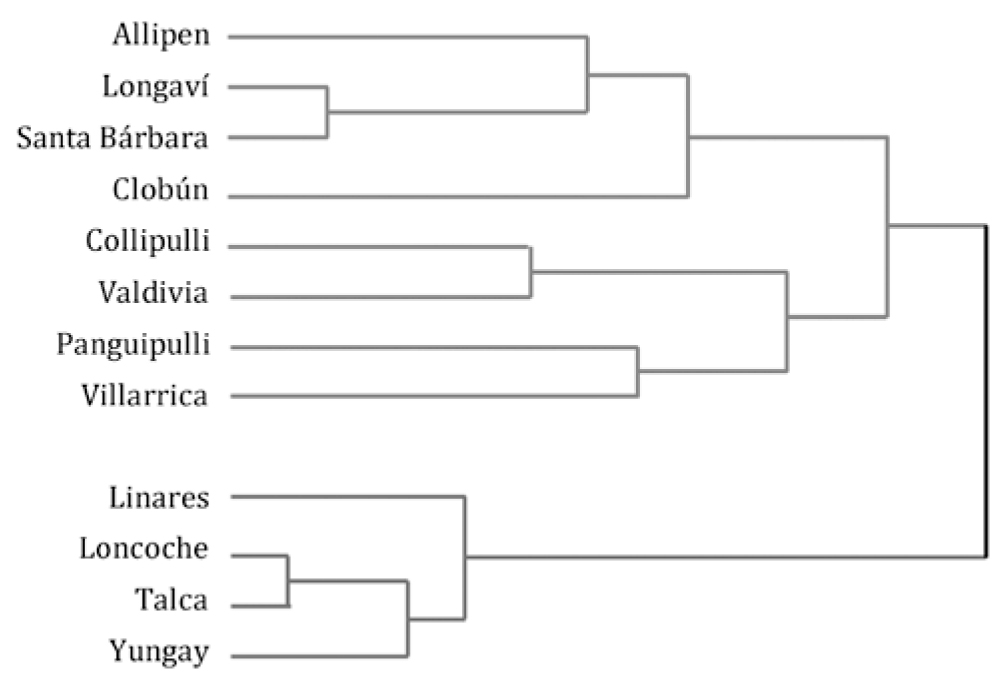Quality and condition features of hazelnut (Corylus avellana L.) cv. Barcelona grown in South-Central of Chile
Keywords:
Corylus avellana, cv. Barcelona, quality and condition, proximal analysesAbstract
In Chile, from Del Maule to Los Lagos regions, the hazelnut (Corylus avellana L.) production and exportation increases steadily, being the quality and condition of fruit a factor to enhance the prices and exportation. In this way, the information is scarce. The aim of this research was to evaluate the fruit quality and condition of hazelnut cv. Barcelona from 14 commercial plantations located in South-Central Chile. Concerning, the fruit and seed weight varied significantly among evaluated plantations and in a lesser level for height, fruit roundness index, shell/seed ratio and seed caliber. Prevailing condition defects were vain fruits and double and wrinkled seeds, incidence of pathogens was low but variable (1%, ranging 0 - 4%). The detachment of perisperm was indicative of acceptable quality (range 3-5) among the plantations. The contents of fatty (60.7%), protein (16.5%), fiber (3.1%), ash (2.18%), acidity (0.15) and peroxides indexes (1.3) did not vary among plantations. Considering the evaluated features two clusters of dissimilarity groups among the localities were conformed, indicative of prevalence relationship o local site-specific and crop management conditions.
Downloads

Downloads
Published
How to Cite
Issue
Section
License
Aquellos autores/as que tengan publicaciones con esta revista, aceptan las Políticas Editoriales.










.jpg)




